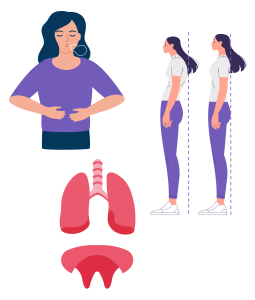Ergonomics and Positioning
Ergonomics and Positioning

Learning Objectives
- Define diaphragmatic breathing and its importance for overall health and well-being.
- Identify the physiological benefits of diaphragmatic breathing, including improved lung capacity, reduced stress, and enhanced relaxation.
- Demonstrate the technique of diaphragmatic breathing, focusing on the engagement of the diaphragm rather than the chest muscles.
- Explain the principles of good posture and its impact on physical health, including spinal alignment and musculoskeletal function.
- Identify different types of postures (sitting, standing, and walking) and the common mistakes to avoid.
- Demonstrate proper posture in various positions, emphasizing the importance of body alignment and balance.
- Discuss the significance of proper toilet positioning for digestive health and comfort.
- Identify the ideal position for using the toilet, including the recommended angle of the knees and hips.
- Demonstrate how to achieve proper toilet positioning, including any tools or modifications that may enhance the experience, such as footstools.
